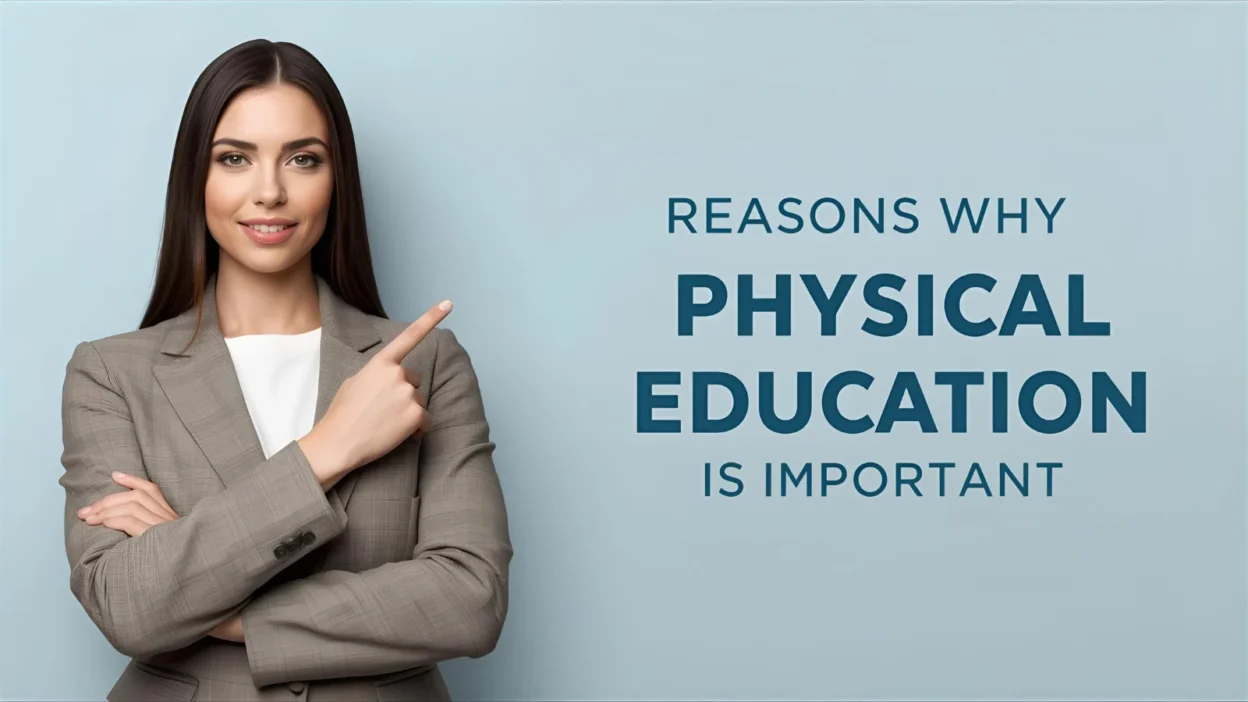When we think of school, we often picture math, science, or language classes. But there’s one subject that shapes not just the mind but the body and spirit—physical education (PE). Far from being “just playtime,” PE helps build lifelong health, discipline, teamwork, and confidence.
This article explores the reasons why physical education is important, how it supports both physical and mental health, and why it remains a vital part of education.
Understanding Physical Education
📌 Definition:
Physical education is the teaching and practice of exercise, fitness, and sports in schools and communities to promote physical and mental well-being.
👉 It combines movement, skill-building, and knowledge about health, preparing students to lead active, balanced lives.
Reasons Why Physical Education Is Important
- Improves physical health – strengthens the body and prevents disease.
- Develops motor skills – coordination, balance, and flexibility.
- Boosts mental health – reduces stress, anxiety, and depression.
- Enhances academic performance – active bodies support sharper minds.
- Teaches teamwork – builds social skills through group activities.
- Encourages discipline – instills habits of consistency and effort.
- Builds confidence – helps students believe in their abilities.
- Promotes lifelong fitness – encourages healthy habits beyond school.
- Supports inclusion – unites students of different backgrounds.
- Reduces obesity – combats sedentary lifestyles.
Physical Education in Daily Life
- Morning exercises – improve focus before classes.
- Sports practice – teaches competition and cooperation.
- Stretching routines – reduce injury and improve posture.
- Outdoor activities – build love for nature and movement.
- Fitness education – introduces nutrition and healthy choices.
💡 Example: A student who plays basketball in PE not only learns a sport but also discipline, strategy, and teamwork.
The Psychology of Physical Education
PE benefits the mind as much as the body:
- Releases endorphins that elevate mood.
- Improves focus and memory for academic success.
- Encourages resilience by teaching how to cope with failure.
- Builds self-esteem through achievement in sports or fitness goals.
📖 “A sound mind in a sound body” is more than a proverb—it’s a truth proven daily in PE classes.
Types of Physical Education Activities
- Aerobic exercises – running, swimming, cycling.
- Strength training – resistance and bodyweight exercises.
- Flexibility activities – yoga, stretching.
- Team sports – basketball, football, volleyball.
- Individual sports – tennis, martial arts.
- Outdoor education – hiking, camping, adventure sports.
Idioms About Physical Effort
- “Break a sweat” – to exercise or work hard.
- “In the same boat” – working as a team.
- “Throw in the towel” – to give up.
- “Kick off” – to start an event or activity.
- “Go the distance” – to persist until success.
Synonyms for Physical Education
| Synonym | Usage Example |
|---|---|
| Sports education | Sports education builds teamwork skills. |
| Fitness training | Fitness training is vital for student health. |
| Exercise program | The school’s exercise program prevents obesity. |
| Health education | Health education teaches about nutrition and fitness. |
| Athletic training | Athletic training prepares students for competition. |
Grammar Note: Physical Education in Use
- Proper noun – Physical Education is part of the curriculum.
- Abbreviation – PE classes are every Monday.
- Adjective form – Physical-education teachers focus on fitness.
👉 Always capitalize Physical Education when referring to the subject in schools.
Real-Life Examples of PE’s Impact
- Finland – schools prioritize PE, leading to healthier and higher-achieving students.
- U.S. programs – sports scholarships create opportunities for students.
- Japan – morning exercises in schools build discipline and unity.
- Olympic athletes – often discover their talents in school PE.
- Community health – regular PE reduces future healthcare costs.
Physical Education and Society
PE supports both individual and collective growth:
- Builds healthier citizens – reduces national health problems.
- Encourages social harmony – sports unite people.
- Supports the economy – healthy populations are more productive.
- Promotes gender equality – equal opportunities in sports.
- Prepares future leaders – teamwork teaches leadership and decision-making.
🌍 Societies with strong PE programs have lower obesity rates, healthier citizens, and stronger community bonds.
Challenges in Physical Education
- Limited resources and facilities.
- Overemphasis on academics reducing PE time.
- Unequal access in low-income areas.
- Body image issues discouraging participation.
- Lack of trained PE teachers in some schools.
⚡ Solution: Governments and schools should prioritize PE alongside academics, invest in resources, and promote inclusive participation.
The Future of Physical Education
PE is evolving with technology and modern needs:
- Wearable fitness tech – monitors student health and progress.
- Virtual PE classes – online workouts and challenges.
- Inclusive PE – adaptive sports for students with disabilities.
- Mind-body integration – combining yoga and mindfulness with PE.
- Eco-friendly activities – outdoor sports promoting sustainability.
🚀 The future of PE blends traditional exercise with innovation, ensuring that students remain active in changing times.
FAQs About Physical Education
Q1: Why is physical education important in schools?
Because it supports health, learning, and social development.
Q2: Does physical education improve academic performance?
Yes—active students focus better and achieve higher academically.
Q3: Can PE prevent health issues?
Yes—it reduces obesity, diabetes, and heart disease risks.
Q4: Is PE only about sports?
No—it includes fitness, health education, and mental well-being.
Q5: How does PE help in real life?
It builds lifelong fitness habits, teamwork, and resilience.
Conclusion
Physical education is not a luxury—it’s a necessity. It builds healthy bodies, sharp minds, and strong characters. From reducing stress to teaching teamwork, PE prepares students not only for exams but for life.
The strongest reason physical education is important? Because it trains the body and mind together—creating balanced, capable individuals



